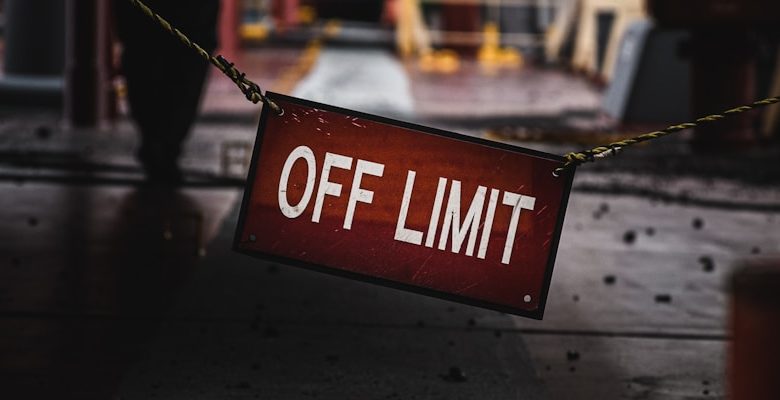How to Use Stop-Loss Orders to Minimize Trading Risks

- How stop-loss orders help protect your investments
- Setting the right stop-loss order for your trading strategy
- The benefits of using stop-loss orders in volatile markets
- Common mistakes to avoid when using stop-loss orders
- Strategies for adjusting stop-loss orders based on market conditions
- Using trailing stop-loss orders to maximize profits and minimize losses
How stop-loss orders help protect your investments
Stop-loss orders are an essential tool for investors looking to protect their investments from sudden market downturns. By setting a stop-loss order, investors can automatically sell a security when it reaches a predetermined price, limiting potential losses. This risk management strategy is particularly useful in volatile markets where prices can fluctuate rapidly.
Stop-loss orders help investors avoid emotional decision-making during times of market uncertainty. Instead of panicking and selling securities at a loss, investors can rely on stop-loss orders to execute a predetermined sell order when a security’s price falls below a certain threshold. This automation reduces the impact of human emotions on investment decisions.
Furthermore, stop-loss orders provide investors with peace of mind knowing that their investments are protected. By implementing stop-loss orders, investors can minimize potential losses and preserve capital for future investment opportunities. This risk mitigation strategy allows investors to focus on long-term investment goals without being distracted by short-term market fluctuations.
Setting the right stop-loss order for your trading strategy
Setting the appropriate stop-loss order for your trading strategy is crucial in managing risks and protecting your investment. It is important to carefully consider various factors when determining the right stop-loss level for each trade.
One key consideration is the volatility of the market. More volatile markets may require a wider stop-loss order to allow for price fluctuations, while less volatile markets may only need a tighter stop-loss order to protect against sudden price movements.
Another factor to consider is the timeframe of your trade. Short-term trades may require a closer stop-loss order to quickly cut losses, while long-term trades may benefit from a wider stop-loss order to allow for more significant price movements.
Additionally, it is essential to consider the overall risk tolerance of your trading strategy. Some traders may be more risk-averse and prefer tighter stop-loss orders, while others may be more aggressive and opt for wider stop-loss orders to ride out market fluctuations.
Overall, setting the right stop-loss order requires a careful balance of market volatility, trade timeframe, and risk tolerance. By carefully considering these factors, you can minimize trading risks and protect your investment in the market.
The benefits of using stop-loss orders in volatile markets
Utilizing stop-loss orders in volatile markets can provide traders with a variety of benefits that help minimize risks and protect their investments. By setting predetermined price levels at which a trade will be automatically closed, traders can limit potential losses and prevent emotional decision-making during times of market turbulence.
One of the key advantages of using stop-loss orders is the ability to manage risk effectively. By establishing a stop-loss order, traders can define the maximum amount they are willing to lose on a trade, allowing them to control their downside and protect their capital. This risk management tool is particularly valuable in volatile markets where prices can fluctuate rapidly and unexpectedly.
In addition to risk management, stop-loss orders can also help traders take a disciplined approach to trading. By sticking to predefined exit points, traders can avoid making impulsive decisions based on fear or greed. This can lead to more consistent trading results over time and help traders stay focused on their long-term trading goals.
Furthermore, stop-loss orders can provide traders with peace of mind, knowing that their positions are protected even when they are not actively monitoring the markets. This can help reduce stress and anxiety associated with trading, allowing traders to make more rational decisions based on their trading strategy rather than emotional reactions to market movements.
Common mistakes to avoid when using stop-loss orders
When using stop-loss orders to minimize trading risks, it is crucial to be aware of common mistakes that traders often make. By avoiding these pitfalls, you can better protect your investments and improve your overall trading strategy.
- Setting stop-loss orders too close to the entry point can result in premature triggering of the order, leading to missed opportunities for profit. It is essential to give your investments enough room to fluctuate without being stopped out too soon.
- Conversely, setting stop-loss orders too far away from the entry point can expose you to larger losses if the market moves against you. Finding the right balance between risk and reward is key to successful trading.
- Not adjusting stop-loss orders as the market conditions change can also be a costly mistake. It is important to regularly review and update your stop-loss levels to reflect current market volatility and trends.
- Relying solely on stop-loss orders without considering other risk management strategies can leave you vulnerable to unexpected market events. Diversifying your risk management approach can help safeguard your investments more effectively.
- Finally, letting emotions drive your decision-making process when it comes to stop-loss orders can lead to impulsive actions that undermine your trading plan. It is crucial to remain disciplined and stick to your predetermined stop-loss levels.
Strategies for adjusting stop-loss orders based on market conditions
One effective strategy for adjusting stop-loss orders based on market conditions is to closely monitor price movements and overall market trends. By staying informed about the market’s behavior, traders can make more informed decisions about when to adjust their stop-loss levels. Additionally, it is important to consider setting trailing stop-loss orders to automatically adjust as the price of an asset moves in a favorable direction.
Another useful approach is to regularly review and reassess the risk-reward ratio of a trade. If the potential reward no longer justifies the risk, it may be time to tighten the stop-loss order to protect profits or limit losses. Conversely, if the market conditions have improved and the trade’s potential has increased, traders may consider widening the stop-loss to allow for more flexibility.
Furthermore, it is essential to take into account any significant news events or economic data releases that could impact the market. By being aware of upcoming events, traders can adjust their stop-loss orders accordingly to mitigate potential risks associated with increased volatility or unexpected price movements. Additionally, diversifying a portfolio and using stop-loss orders on multiple trades can help spread risk and protect against significant losses in case of adverse market conditions.
Using trailing stop-loss orders to maximize profits and minimize losses
One effective strategy for managing trading risks is to utilize trailing stop-loss orders. A trailing stop-loss order is a type of order that allows traders to set a specific percentage or dollar amount below the current market price for a long position, or above the current market price for a short position. This order automatically adjusts as the market price moves in favor of the trade, helping to lock in profits while also minimizing potential losses.
By using trailing stop-loss orders, traders can maximize their profits by letting winning trades run while also protecting themselves from significant losses. This strategy is particularly useful in volatile markets where prices can fluctuate rapidly. Traders can set their trailing stop-loss orders at a comfortable distance from the current market price to give their trades room to breathe while still ensuring that they capture a substantial portion of their profits.
One key advantage of trailing stop-loss orders is that they help traders avoid emotional decision-making. By setting predetermined exit points based on objective criteria, traders can avoid the temptation to hold onto losing trades in the hopes that they will turn around. This disciplined approach can help traders stay focused on their overall trading strategy and prevent them from making impulsive decisions that could result in significant losses.
In conclusion, utilizing trailing stop-loss orders is an effective way to manage trading risks, maximize profits, and minimize potential losses. By setting predetermined exit points based on objective criteria, traders can avoid emotional decision-making and stay focused on their overall trading strategy. This disciplined approach can help traders navigate volatile markets with confidence and achieve their trading goals.



